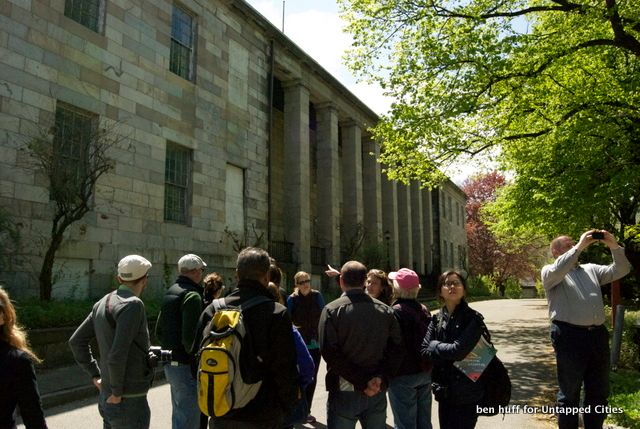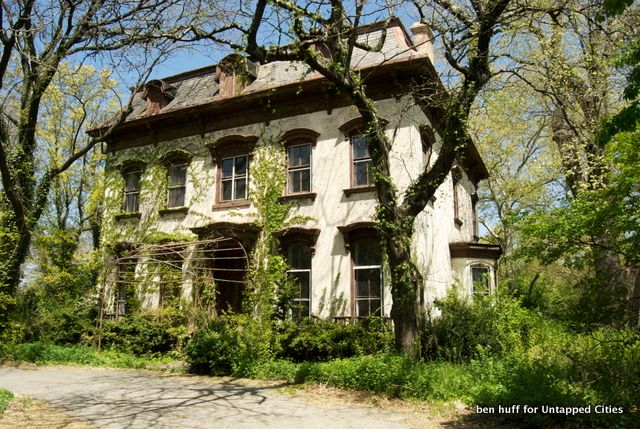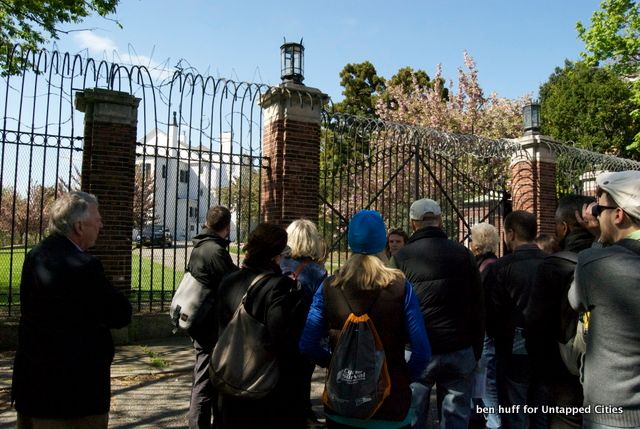Last Chance to Catch NYC's Holiday Notalgia Train
We met the voices of the NYC subway on our nostalgia ride this weekend!

As part of a Municipal Art Society Jane’s Walk with the Brooklyn Greenway Initiative, we had a chance to check out the Navy Yard Hospital and the surrounding area.

Our tour was led by Milton Puryear, lead planner and co-founder of the Brooklyn Greenway Initiative and Michael Porto, an engineer and board member. This site, visible from the BQE, is one of the largest currently vacant parcels we have been to in Brooklyn. This section of the Navy Yard has been abandoned for decades and not used as a hospital since 1948, when the Navy Hospital was moved to a larger facility in St. Albans, Queens. The main building is made of pristine Tuckahoe Marble, while next door is the Surgeon’s house. Both gorgeous buildings, even in decay.



Tucked away in a quiet corner of an already quiet Vinegar Hill, we learned that the Commandant’s House was the first building built by the federal goverment after they had bought the land form private shipbuilder John Jackson in 1801. The building, completed in 1807 is thought to be designed by Charles Bulfinch, designer of multiple State Houses in New England as well as the Capitol Dome in D.C. The Commandant’s House is landmarked by both the city and national government, and was sold by the federal government in the 1960s to a private family. To this day the building is still in private ownership, making it certainly one of the most unique houses in Brooklyn.

The abandoned Navy Yard Cemetery was originally the resting place for around 2,000 military service members. They were disinterred in 1926 to be reinterred in Cypress Hills, but a survey in 1997 found additional remains. Since it cannot be used for economic development purposes, the Navy Yard Development Corporation and the Greenway Initiative are proposing to turn it in to a landscaped park with native plants. The idea is that with a large enough amount of native vegetation they will be able to attract pollinators that will benefit the other parks and gardens of northwest Brooklyn. Aside from environmental benefits, our guides also discussed the health and especially mental health benefits this project could have for local residents. We couldn’t agree more, as this section of the walk was particularly relaxing to be in a large open space where wild nature has reclaimed land from the former military hosptial.
Subscribe to our newsletter